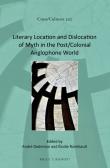The Thylacine or 'Tasmanian Tiger' today is a well-known and well-loved icon of the Australian world. Although it is probable that the species had already disappeared from mainland Australia by 1788, it was still present in Tasmania when settlement of the island began in 1803. As the colony expanded, this largest surviving carnivorous marsupial came to be seen as such a formidable threat to the pastoral economy that bounty schemes were introduced to eradicate it. Since the last captive thylacine died in 1936, however, it has become a symbol of Australian and more specifically Tasmanian identity. The heraldic crests of several towns in Tasmania feature at least one thylacine as supporter and the State Tasmania has two. It also appears on licence plates and until quite recently graced the labels of the state's best-selling beer.' Nor are all Australians reconciled with the official view that the 'Tassie tiger' should now be considered irreversibly lost. Every year, there are several claimed sightings throughout Australia and thousands of dollars have been put towards the quest for the thylacine, either to try to catch it alive or to clone it back to life using DNA material extracted from museum specimens. Tourist shops cater to thylacine nostalgia by selling T-shirts, magnets, and key-rings adorned with tigers and the caption 'I want to believe' as well as mugs and caps that simply read: 'I'm alive'. Such a reversal in the perceptions of the thylacine, from colonist's bane to national icon and naturalist's grail constitutes a striking example of the complex and contradictory uses mythical constructions of otherness have been put to in settler communities.' (Introduction)



